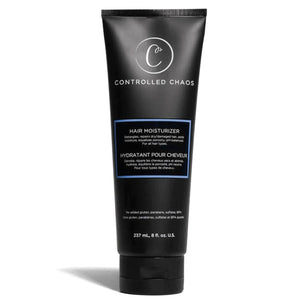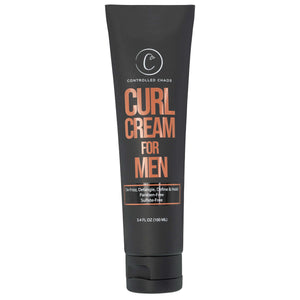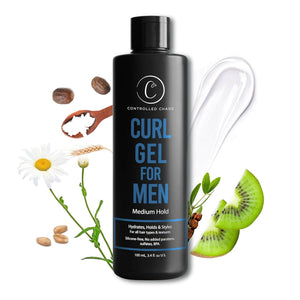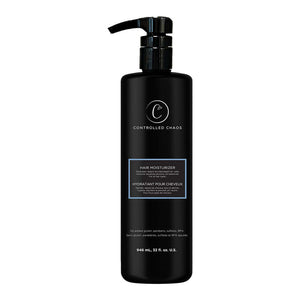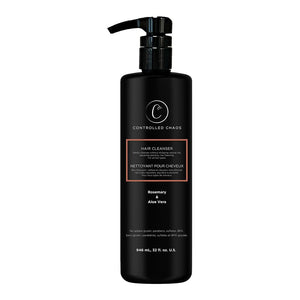

Curly hair is a common issue many people face, particularly on the top layer of their hair. This frustrating phenomenon can make your hair look unmanageable. Understanding the causes of frizz and how to manage it effectively is critical to maintaining healthy hair. In this blog, you will get an answer to your question: Why is the top layer of my hair so frizzy?
What Causes the Top Layer of Hair to Become Frizzy?
1. Environmental Factors
The top layer of your hair is most exposed to environmental elements such as humidity, sunlight, and wind. Humidity causes hair to absorb moisture from the air, swelling the hair shaft and resulting in frizz. Meanwhile, UV rays and wind can dehydrate and roughen the hair’s cuticle, exacerbating the problem.
2. Damaged Hair Cuticles
The cuticle is the outermost layer of the hair strand. When the cuticle is damaged or lifted, moisture escapes from the hair, leading to dryness and frizz. Heat styling, harsh brushing, and chemical treatments often contribute to cuticle damage, especially on the outer layers. Once you understand these problems, you should follow frizzy top layer hair care tips.
3. Hair Texture and Porosity
Naturally, curly or wavy hair types are more prone to frizz due to the uneven structure of the strands. High-porosity hair, which absorbs moisture quickly but loses it just as fast, often appears frizzier—especially on the top layer.
4. Friction from Clothing or Bedding
The top layer of hair frequently comes into contact with surfaces such as pillowcases, hats, and scarves. This friction can create static and disrupt the hair’s natural smoothness, making the top layer appear frizzier than the layers underneath.
5. Improper Hair Care Routine
Using the wrong products or skipping essential steps in your hair care routine can leave the top layer of your hair dry and frizzy. For example, paying attention to conditioning your hair or using products with drying ingredients like alcohol.
How to Tame Frizz on the Top Layer of Hair?
Here are some easy ways to tame top layer hair frizz control:
1. Hydrate and Nourish Your Hair
Frizz thrives in dry hair, so keeping your hair well-moisturized is essential. Use a hydrating shampoo and conditioner designed for your hair type. Incorporate a deep conditioning treatment or a hair mask weekly to replenish moisture.
2. Use a Leave-In Conditioner
A leave-in conditioner helps to lock in moisture and smoothen the hair cuticle. Apply it to the top layer of your hair for extra protection.
3. Limit Heat Styling
Excessive heat styling can strip your hair of natural oils and damage the cuticle, making frizz worse. Opt for air-drying your hair or use heat styling tools sparingly, always with a heat protectant spray.
4. Protect Your Hair While Sleeping
Switch to a silk or satin pillowcase to reduce friction while you sleep. You can also tie your hair in a loose braid or bun to minimize tangling and frizz.
5. Choose the Right Products
Look for frizz-fighting products that are free from sulfates and alcohol. Natural oils like argan or coconut oil can smoothen the top layer.
6. Regular Trims and Maintenance
Split ends and damaged strands often lead to frizz, so keeping your hair trimmed regularly can help maintain its overall health and manageability.
Preventing Frizz:
Here are some Top layer hair frizz preventions:
- Avoid Overwashing: Washing your hair too often strips it of its natural oils, leading to dryness and frizz. Stick to 2–3 washes per week.
- Detangle with Care: Use a wide-tooth comb to detangle damp hair gently. Avoid rough brushing, as this can disrupt the cuticle layer.
- Seal with Serum or Oil: Apply a small amount of serum or oil to the top layer to seal moisture and create a smooth finish.
- Stay Hydrated: Drink plenty of water and maintain a balanced diet to promote healthy, hydrated hair.
Common Myths About Frizzy Hair Debunked
1. Frizz Means My Hair Is Unhealthy
Not necessarily! Frizz can happen even if your hair is healthy, especially in humid conditions or if your hair is naturally textured. It’s more about how you care for your hair rather than the presence of frizz itself.
2. Oiling My Hair Will Eliminate Frizz
While oils can temporarily smooth hair, they don’t address the root cause of frizz. Overusing oils may weigh down hair or even block moisture absorption, making it less effective. Instead, oils should be used as a supplement to a comprehensive hydration routine.
3. Cutting Hair Short Gets Rid of Frizz
Short hair won’t automatically eliminate frizz. Frizz is more about managing your hair’s texture and hydration, not length. While a trim can help with damaged ends, proper care is still necessary regardless of hair length.
How to Style Frizz-Prone Hair?
Styling frizz-prone hair doesn’t have to be a challenge. Here’s a step-by-step guide for controlling top layer hair frizz control:
-
Start with Damp Hair
Frizz is easier to manage when hair is damp. Apply a leave-in conditioner or curl-enhancing cream for moisture and definition. -
Use the Right Tools
Opt for a wide-tooth comb or a detangling brush to avoid tugging on the hair. For blow-drying, use a diffuser attachment to distribute heat evenly and prevent frizz. -
Layer Products Wisely
Apply anti-frizz serums or creams in small amounts to avoid weighing down your hair. Focus on the top layer to create a smoother finish. -
Set Your Style
Finish with a lightweight hairspray or styling oil to lock in your look. Avoid touching your hair throughout the day, as this can cause frizz to return.
Building a Frizz-Free Hair Care Routine
Achieving long-term control over frizz requires commitment and the right frizzy top layer hair care tips:
1. Incorporate Humectants and Emollients
Products with humectants like glycerin and emollients like shea butter help retain moisture, keeping frizz at bay.
2. Invest in a Microfiber Towel
Regular towels can roughen the hair cuticle, while microfiber towels or an old T-shirt can absorb water gently and reduce frizz.
3. Trim Split Ends Regularly
Frizz often starts at the ends, so regular trims are essential for maintaining healthy, smooth hair.
4. Opt for Deep Hydration Treatments
Professional salon treatments like keratin therapy or hydrating masks can provide long-lasting frizz control and repair damaged cuticles.
Conclusion
In short, you have the answer to your question: Why is the top layer of my hair so frizzy? Frizz, particularly on the top layer of your hair, can be frustrating. By understanding its causes, you can manage frizz and achieve smoother hair. Focus on hydration, use protective techniques, and choose hair care products wisely.
Faqs
How do you get rid of the top layer of frizz?
To reduce the top layer of frizz, apply a lightweight anti-frizz serum or leave-in conditioner, focusing on the surface, and smooth it with your fingers or a soft brush. Use a microfiber towel to dry your hair gently to minimize frizz caused by friction.
Why is my hair frizzy on top?
Frizz on the top layer occurs because this section is most exposed to environmental factors like humidity, sun, or dryness. Damaged cuticles or lack of moisture can also make the hair on top more prone to frizz.
How do I stop the frizz on the top of my head?
You can stop frizz on the top of your head by hydrating your hair with moisturizing products, sealing the cuticle with a smoothing serum, and avoiding heat styling without protection. Regular trims can also help remove damaged ends.
How do I make the top of my hair not frizzy?
Use a nourishing leave-in conditioner or anti-frizz cream after washing, and avoid touching your hair throughout the day. Styling with a silk scarf or sleeping on a satin pillowcase also helps keep the top layer smooth.
How often should I condition my hair to prevent frizz on the top layer?
Condition your hair every time you wash it, typically 2–3 times a week, and incorporate deep conditioning treatments once weekly to keep the top layer hydrated and frizz-free.
Can I use a leave-in conditioner to help with frizzy top-layer hair?
Yes, a leave-in conditioner is highly effective for taming frizz on the top layer. It provides lasting moisture and smoothness while protecting your hair from environmental factors.
How can I protect my hair from frizz on the top layer in the winter?
To prevent winter frizz, keep your hair hydrated with leave-in products. Also, you should use a hat lined with satin or silk, and apply an anti-frizz serum before entering cold, dry air.


